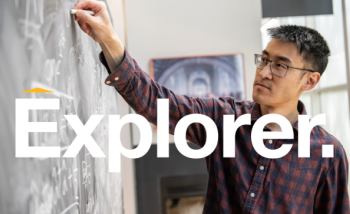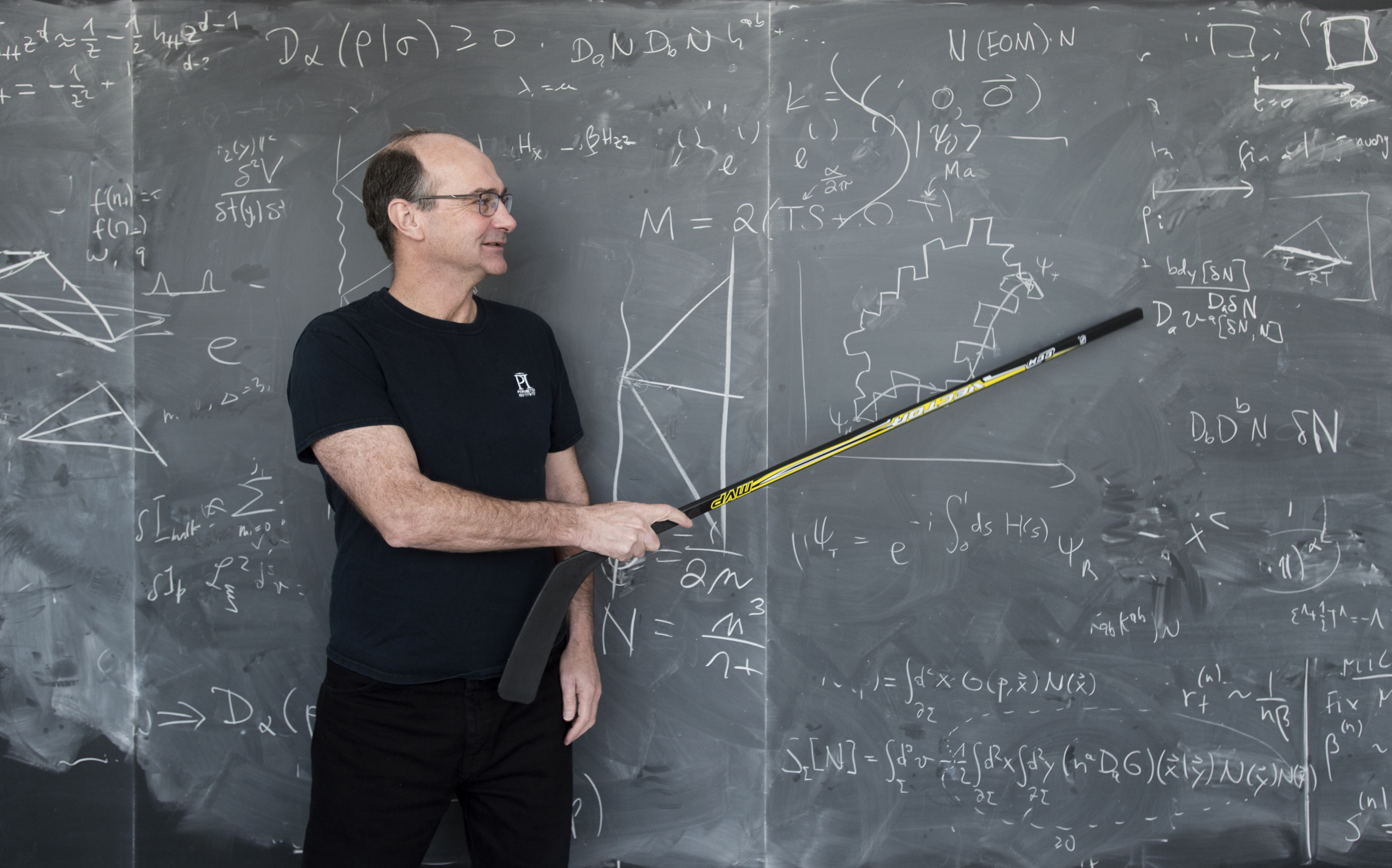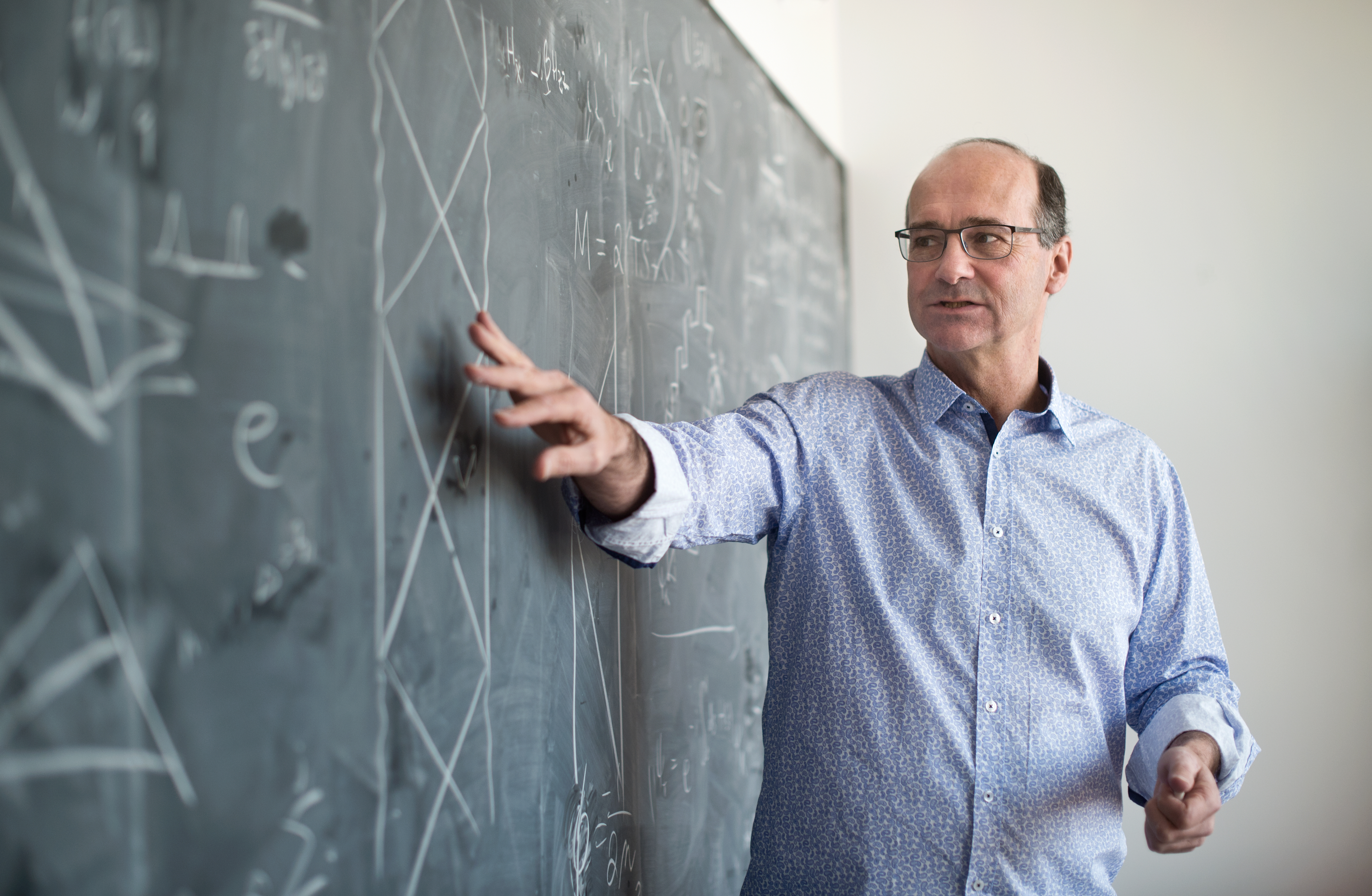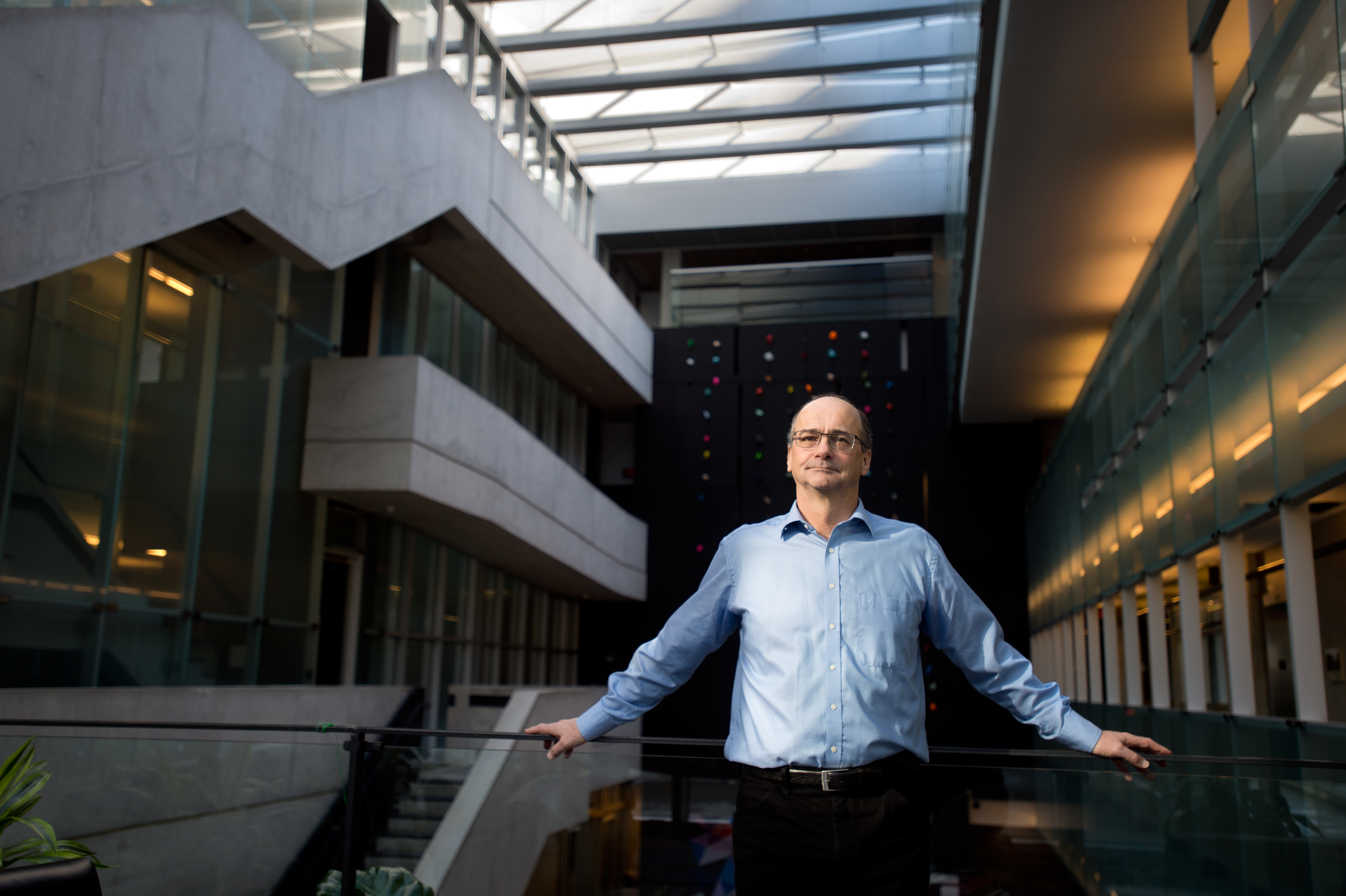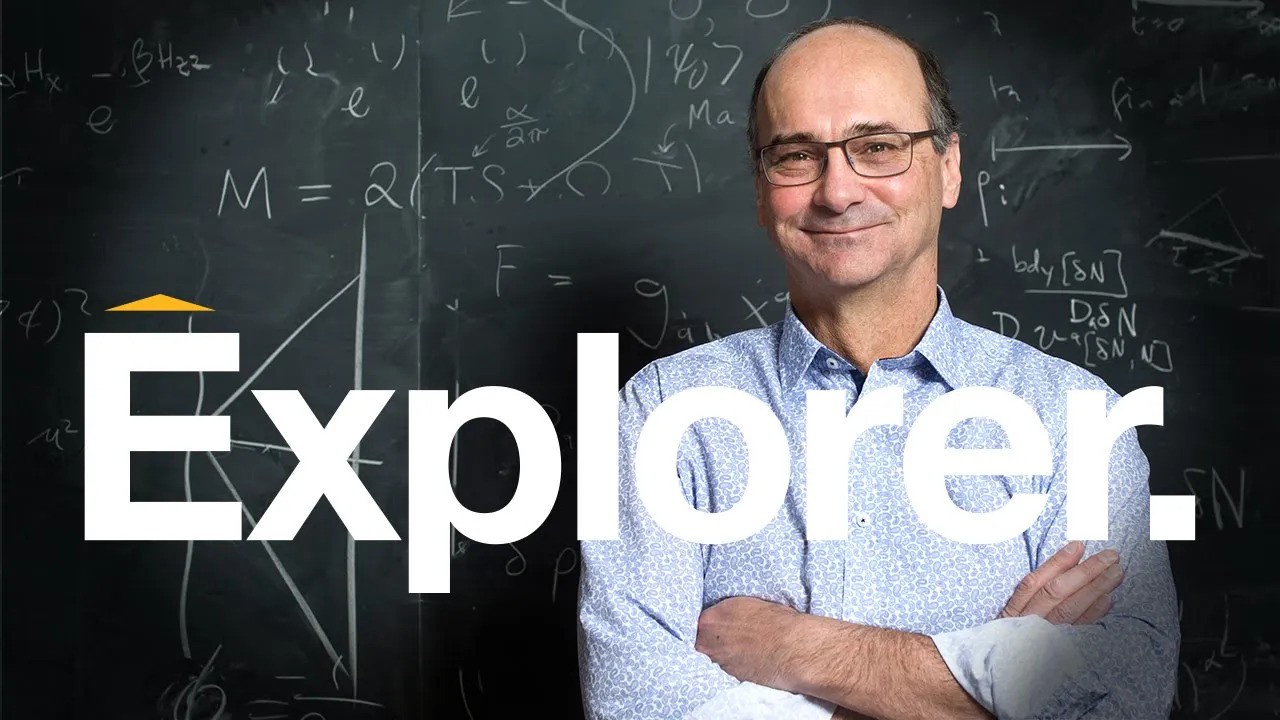To those in the know about theoretical physics, Robert Myers needs no introduction. As BMO Financial Group Isaac Newton Chair in Theoretical Physics at Perimeter Institute, Myers’ career has brought about a litany of new insights, especially in the ongoing efforts to establish a unified theory of quantum gravity, by fusing quantum mechanics with Einstein’s general relativity.
“Quantum gravity is one of the deepest, most challenging questions that theoretical physicists have faced. They've been struggling with this question for over 75 years now,” Myers says.
“It’s a question that I'm excited about, and we see new ideas, new directions, and new developments coming in all the time,” he adds.
Quantum gravity is always on Myers’ mind in some capacity. But his record shows that he isn’t really someone to be pinned down to just one field of research. He thrives on trying new things, and his most productive discoveries have come from stepping out of his comfort zone and combining disciplines. Doing so has allowed him to contribute to physics in numerous areas, studying everything from black holes in higher dimensions to quantum chromodynamics (a theory for understanding the strong nuclear force) to quantum information.
“I've always loved learning new ideas,” he says. “When I make contact with a new research area – be it quantum information, or before that nuclear physics, or before that it was cosmology – you learn a lot of new ideas, and then you can bring your experience to those ideas and apply them to new questions and produce new developments. And the best part is that it creates opportunities to interact with a completely new community of physicists.”
This strategy of manufacturing ‘collisions’ between research areas has served Myers well.
One fruitful example from the last decade or so involved making new connections between the field of quantum gravity and quantum information. Like a spark setting a flame, this research quickly led to the proof of new theorems and launched a flurry of new work by experts around the world.
Here’s the background: in 2006, physicists Shinsei Ryu and Tadashi Takayanagi took a concept from quantum information theory known as entanglement entropy – a way to quantify the extent of quantum correlation between two subsystems – and applied it in an untried scenario: the AdS/CFT correspondence.
AdS/CFT can be thought of as a ‘toy model universe’ where gravity and quantum field theories play unusually nice together. A 2D field theory on the boundary of such a universe is mathematically equivalent to a 3D description of gravity within that universe: one acts like a ‘hologram’ of the other.
Ryu and Takayanagi posed a conjecture that in AdS/CFT, there is a relationship between the entanglement entropy of the field theory and the geometry of the associated spacetime.
The implications of that conjecture sat on Myers’ backburner for a long while, but that changed when he began working with a former Perimeter postdoctoral fellow, Aninda Sinha, now a Professor at the Indian Institute of Science in Bangalore. The pair were playing around with calculations in AdS/CFT (evaluating something known as the ‘central charges’ of the boundary theory) and trying to understand what they meant. Myers came to realize, with some surprise, that what they were really doing was a calculation of entanglement entropy in the boundary theory.
Intrigued, they investigated the implications of this discovery in the context of renormalization group (RG) flows. RG flows are a way to transition from one theory to another as energy scales change, since any given field theory may only be effective within a certain energy level.
They found that the field theory properties calculated with entanglement entropy would take on a different value at the other end of the RG flow, with fascinating implications for high-energy physics and for how we understand the duality between quantum fields and gravity.
Myers’ and Sinha’s discoveries breathed new life into Ryu and Takayanagi’s conjecture, showing that entanglement entropy has important roles in quantum field theory, and that holographic entanglement entropy is a powerful tool in understanding the AdS/CFT correspondence.
This is just one example of a successful research area ‘collision’ from a storied career. It has become a signature modus operandi for Myers.
But Myers is also an institution builder, and he has helped incorporate such ‘collisions’ into the way Perimeter Institute itself operates. Perimeter owes quite a lot to Myers’ vision and guidance, as a founding faculty member and more recently as director.
When Blackberry founder Mike Lazaridis approached Myers twenty-five years ago to join the fledging physics institute, Perimeter was little more than an ambitious idea: that advancing fundamental physics today could produce technological marvels that would shape the lives of future generations. But there was no guarantee of success.
“It was Mike’s character, and what he was willing to do, that drew me in,” says Myers. “He was adventurous. It was an opportunity to do something new, and perhaps do something important. And I was really impressed by Lazaridis’ thoughtfulness, his commitment to the idea, and that he had real ambition to do something extraordinary for Canada and in Canada.”
Since then, with Myers’ help, and with strong support from the Canadian public, Perimeter has grown into a world-class theoretical physics institute – the largest of its kind anywhere.
One of the Institute’s secrets to success is that it facilitates collaboration, bringing experts from around the world to Waterloo to share ideas. Myers has sought to enable that during his time as director.
“At Perimeter, one of the basic principles is that it's this watering hole, where we bring all kinds of people together,” he says.
This principle has enabled some remarkable collaborations with outstanding scientists the world over.
Myers’ work with Sinha is one such example, but it has more recently led to new collaborations with Argentinian physicists Horacio Casini and Marina Huerta to construct general proofs and broaden the results that came out of Myers’ earlier work with Sinha. These collaborations wouldn’t have been possible without Perimeter’s commitment to maintaining a vibrant visiting scientist program.
Myers has also worked hard to ensure that Perimeter fosters a welcoming environment for the next generation of physicists, who will carry the torch in the coming decades.
“If I'm thinking about inspiration, what keeps me going these days is all the young people, their energy, their excitement, their ideas. At Perimeter, there are ample opportunities to work with so many brilliant students and postdocs. It's really rewarding to see them flourish as researchers.”
As for what’s next for Myers, he’s keen to see how the new field of celestial holography develops, with help from Perimeter scientists. This is another ‘collision’ of ideas that attempts to make holographic dualities work in the real universe, rather than within the constraints of AdS/CFT.
“There's a lot of energy and excitement, but we’re in the middle of the collision, and we don't really know where things are going to land. I have a sense that celestial holography is in the midst of creating something very exciting, and I can't wait to see where it goes,” he says.
For all his accomplishments, Myers is humble about his role in establishing Perimeter, and in fostering the foundational breakthroughs that come out of the institute:
“I had the opportunity to come in at the ground floor and help create something new out of nothing, and I just think how lucky I was that I got to do that. It's something that very few people have an opportunity to do. It’s been very exciting.”
Further exploration
À propos de l’IP
L'Institut Périmètre est le plus grand centre de recherche en physique théorique au monde. Fondé en 1999, cet institut indépendant vise à favoriser les percées dans la compréhension fondamentale de notre univers, des plus infimes particules au cosmos tout entier. Les recherches effectuées à l’Institut Périmètre reposent sur l'idée que la science fondamentale fait progresser le savoir humain et catalyse l'innovation, et que la physique théorique d'aujourd'hui est la technologie de demain. Situé dans la région de Waterloo, cet établissement sans but lucratif met de l'avant un partenariat public-privé unique en son genre avec entre autres les gouvernements de l'Ontario et du Canada. Il facilite la recherche de pointe, forme la prochaine génération de pionniers de la science et communique le pouvoir de la physique grâce à des programmes primés d'éducation et de vulgarisation.
Ceci pourrait vous intéresser


